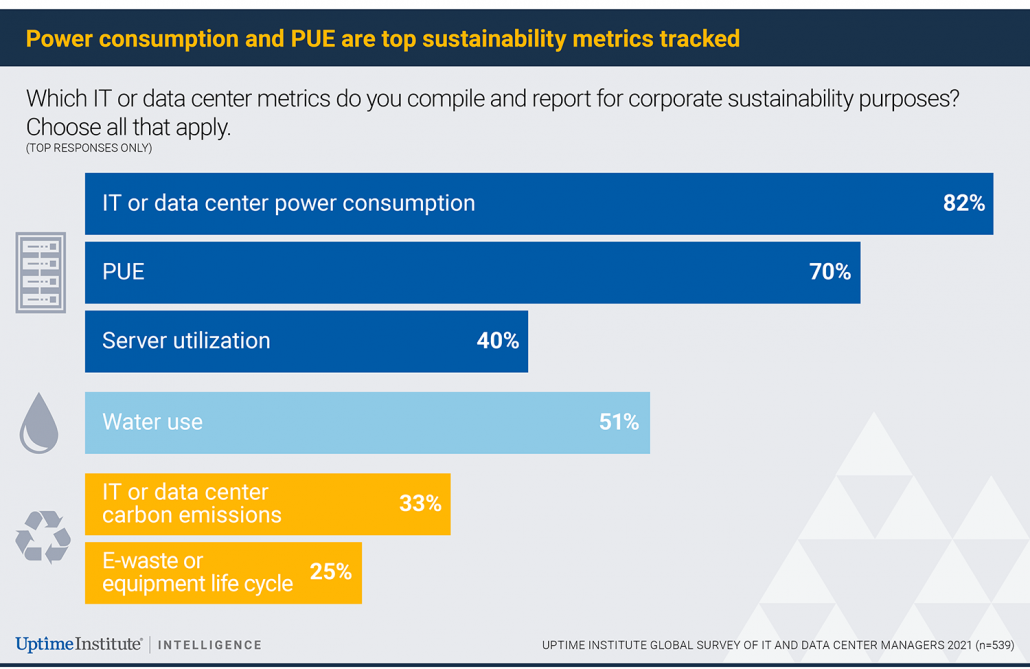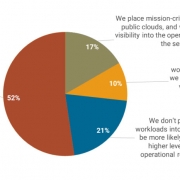Sustainability laws set to drive real change
Nearly 15 years ago – in 2008 – Uptime Institute presented a paper titled “The gathering storm.” The paper was about the inevitability of a struggle against climate change and how this might play out for the power-hungry data center and IT sector. The issues were explored in more detail in the 2020 Uptime Institute report, The gathering storm: Climate change and data center resiliency.
The original presentation has proven prescient, discussing the key role of certain technologies, such as virtualization and advanced cooling, an increase in data center power use, the possibility of power shortages in some cities, and growing legislative and stakeholder pressure to reduce emissions. Yet, all these years later, it is clear that the storm is still gathering and — for the most part — the industry remains unprepared for its intensity and duration.
This may be true both literally – a lot of digital infrastructure is at risk not just from storms but gradual climate change – and metaphorically. The next decade will see demands for data center operators to become ever more sustainable from legislators, planning authorities, investors, partners, suppliers, customers and the public. Increasingly, many of these stakeholders will expect to see verified data to support claims of “greenness”, and for organizations to be held accountable for any false or misleading statements.
If this sounds unlikely, then consider two different reporting or legal initiatives, which are both in relatively advanced stages:
- Taskforce on Climate-related Financial Disclosures (TCFD). A climate reporting initiative created by the international Financial Stability Board. TCFD reporting requirements will soon become part of financial reporting for public companies in the US, UK, Europe and at least four other jurisdictions in Asia and South America. Reports must include all financial risks associated with mitigating and adapting to climate change. In the digital infrastructure area, this will include remediating infrastructure risks (including, for example, protecting against floods, reduced availability of water for cooling or the need to invest in addressing higher temperatures), risks to the equipment or service providers, and (critically) any potential exposure to financial or legal risks resulting from a failure to meet stated and often ambitious carbon goals.
- European Energy Efficiency Directive (EED) recast. This is set to be passed into European Union law in 2022 and to be enacted by member states by 2024 (for the 2023 reporting year). As currently drafted, this will mandate that all organizations with more than approximately 100 kilowatts of IT load in a data center must report their data center energy use, data traffic storage, efficiency improvements and various other facility data, and they must perform and publicly report periodic energy audits. Failure to show improvement may result in penalties.
While many countries, and some US states, may lag in mandatory reporting, the storm is global and legislation similar to the TCFD and EED is likely to be widespread before long.
As shown in Figure 1, most owners and operators of data centers and digital infrastructure in Uptime’s 2021 annual survey have some way to go before they are ready to track and report such data — let alone demonstrate the kind of measured improvements that will be needed. The standout number is that only about a third calculate carbon emissions for reporting purposes.

All organizations should have a sustainability strategy to achieve continuous, measurable and meaningful improvement in operational efficiency and environmental performance of their digital infrastructure (including enterprise data centers and IT in colocation and public cloud data centers). Companies without a sustainability strategy should take immediate action to develop a plan if they are to meet the expectations or requirements of their authorities, as well as their investors, executives and customers.
Developing an effective sustainability strategy is neither a simple reporting or box-ticking exercise, nor a market-led flag-waving initiative. It is a detailed, comprehensive playbook that requires executive management commitment and the operational funding, capital and personnel resources to execute the plan.
For a digital sustainability strategy to be effective, there needs to be cross-disciplinary collaboration, with the data center facilities (owned, colocation and cloud) and IT operations teams working together, alongside other departments such as procurement, finance and sustainability.
Uptime Institute has identified seven areas that a comprehensive sustainability strategy should address: Greenhouse gas emissions; energy use (conservation, efficiency and reduction); renewable energy use; IT equipment efficiency; water use (conservation and efficiency); facility siting and construction; and disposal or recycling of waste and end-of-life equipment.
Effective metrics and reporting relating to the above areas are critical. Metrics to track sustainability and key performance indicators must be identified, and data collection and analysis systems put in place. Defined projects to improve operational metrics, with sufficient funding, should be planned and undertaken.
Many executives and managers have yet to appreciate the technical, organizational and administrative/political challenges that implementing good sustainability strategies will likely entail. Selecting and assessing the viability of technology-based projects is always difficult and will involve forward-looking calculations of costs, energy and carbon risks.
For all operators of digital infrastructure, however, the first big challenge is to acknowledge that sustainability has now joined resiliency as a top-tier imperative.




 2020
2020





